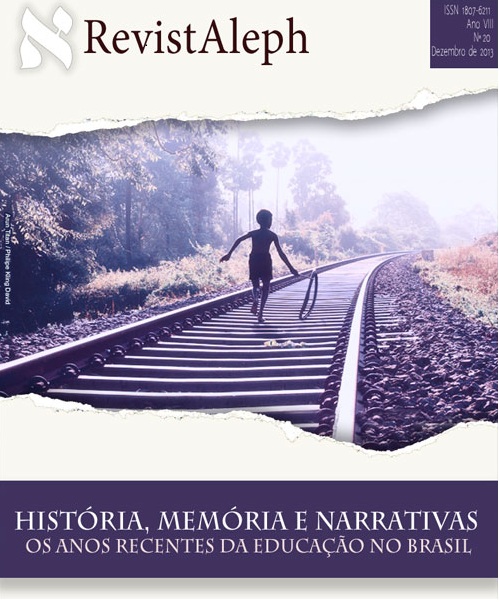“QUAIS MAÇÃS DE FACES ROSADAS”: FREI PEDRO SINZIG E EDUCAÇÃO CENSÓRIA NA FORMAÇÃO DO PÚBLICO LEITOR BRASILEIRO
DOI:
https://doi.org/10.22409/revistaleph.v0i20.38982Resumo
Resumo
“Através dos romances: guia para as consciências”, de Frei Pedro Sinzig, é uma rara peça de crítica literária, enviesada pelo olhar canônico do censor franciscano que supõe compor um “manual do bom leitor”. O curioso Index, com 21.553 verbetes que comentam a obra de 6.657 autores das mais díspares procedências, recomendava leituras sadias para o público leitor, além de apresentar os livros rejeitados, na tentativa de estabelecer uma mediação “controlada” da leitura (ou da não-leitura). Além disso, enseja reflexão sobre os processos de formação de leitores (dentro e fora da escola) no início do século XX.
Palavras-chave: Frei Pedro Sinzig; História da Educação; memória
franciscana; manuais de leitura; censura católica
ABSTRACT
“Através dos romances: guia para as consciências”, by Friar Pedro Sinzig, is a rare piece of literary criticism, skewed by the Franciscan censor’s canonical look that supposed to compose a "manual of the good reader". The curious Index, with 21,553 entries that comment on the work of 6,657 authors from over disparate origins, recommended healthy readings for the public reader, besides presenting the rejected books in an attempt to establish a "controlled" mediation of the reading (or the non-reading). In addition, it produces reflection about the processes of the formation of readers (in and out of school) in the early twentieth century.
Keywords: Friar Pedro Sinzig; History of the Education; Franciscan
memory; reading manuals; Catholic censorship.
Downloads
Downloads
Publicado
Edição
Seção
Licença
Copyright (c) 2014 Anabelle Loivos Considera Conde Sangenis, Luiz Fernando Conde Sangenis

Este trabalho está licenciado sob uma licença Creative Commons Attribution 4.0 International License.
Autores mantém os direitos autorais e concedem à revista o direito de primeira publicação, com o trabalho simultaneamente licenciado sob Attribution-ShareAlike 4.0 International que permite o compartilhamento do trabalho com reconhecimento da autoria e publicação inicial nesta revista.
Autores têm autorização para assumir contratos adicionais separadamente, para distribuição não-exclusiva da versão do trabalho publicada nesta revista (ex.: publicar em repositório institucional ou como capítulo de livro), com reconhecimento de autoria e publicação inicial nesta revista.
Autores têm permissão e são estimulados a publicar e distribuir seu trabalho online (ex.: em repositórios institucionais ou na sua página pessoal) a qualquer ponto antes ou durante o processo editorial, já que isso pode gerar alterações produtivas, bem como aumentar o impacto e a citação do trabalho publicado (Veja O Efeito do Acesso Livre).











